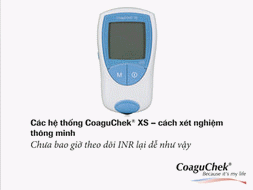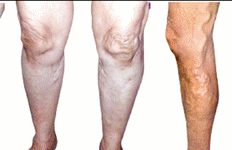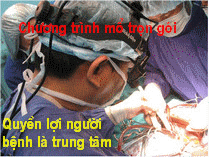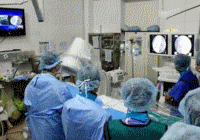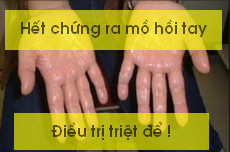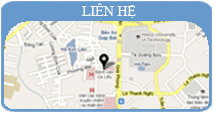Trang 3 trong tổng số 5
 |
Surgical technique |
IndicationsIn addition to the generally accepted indications for SVR, as
presented by Menicanti and Di Donato [
9], patients planned for
SVR are assessed for presence of spontaneous or inducible-only
ventricular arrhythmias (Schematic
1). We perform programmed
electrical stimulation (PES) before surgery and after surgery,
preferably in patients free from anti-arrhythmic medication,
using a standard protocol including double or triple extra stimuli,
three stimulation rates, and two locations. The protocol is
terminated if sustained VT is induced. Sustained VT is defined
as a tachycardia lasting more than 30 s or clinically requiring
intervention before that [
10]. In patients with preoperatively
verified either spontaneous or inducible-only VT, we perform
specific arrhythmia surgery in addition to SVR. Coronary artery
bypass grafting and mitral valve repair is also performed when
needed.

View larger version(24K):
[in this window]
[in a new window]
|
Schematic 1 Investigations and decision making in patients planned for surgical ventricular restoration.
SVR, surgical ventricular restoration; ICD, implantable cardioverter-defibrillator; PES, programmed electrical stimulation; VT, ventricular tachycardia.
|
|
Surgical procedureSurgical ventricular restoration is performed with the technique
described by Dor [
11]. The operative procedure has been well
illustrated by Menicanti and Di Donato [
9].
Cardiopulmonary bypass and moderate systemic hypothermia is used. Transesophageal echocardiography is used to evaluate preoperative and postoperative left ventricular and mitral valve function, filling and de-airing. The aorta is cross-clamped, and myocardial protection is achieved with intermittent cold antegrade and retrograde blood cardioplegia.
The left ventricle is incised parallel to the interventricular septum and the left anterior descending artery (Video 1).

Click on image to view video |
Video 1 Opening of the left ventricle.
The left ventricle is incised parallel to the interventricular septum and the left anterior descending artery. If clots are present, they are removed. Four stay sutures will provide excellent exposure of the inside of the left ventricle and the mitral valve. The border-zone between aneurysm and normal myocardium is identified and the mitral apparatus is evaluated.
|
|
If present, mitral regurgitation is repaired by the Alfieri
edge-to-edge technique (Video
2).

Click on image to view video |
Video 2 Edge-to-edge mitral repair.
If there is more than I+ mitral regurgitation the valve is repaired by a transventricular approach using the Alfieri edge-to-edge technique [12] in this case without annuloplasty. A 4-0 polypropylene suture, reinforced by pledgets of autologous pericardium is placed in the center of the anterior and posterior leaflets, creating a double-orifice mitral valve.
|
|
Concerns regarding sub-optimal long-term durability of the edge-to-edge
plasty without annuloplasty in combination with SVR [
13] have
convinced us to change our policy and since 2003 we add annuloplasty
to mitral valve repair during SVR, usually as a posterior plication
suture as described by Menicanti et al. [
14].
Endocardiectomy is performed on the interventricular septum, apex and anterolateral wall (Video 3).

Click on image to view video |
Video 3 Endocardiectomy.
An extensive, visually guided endocardiectomy is performed on the interventricular septum, apex and anterolateral wall. The endocardial resection is circumferential and extensive on all sides of the walls. The fibrotic endocardial tissue is removed by means of blunt and sharp dissection, effectively eliminating the substrate for arrhythmias. After completion of the endocardiectomy, the right ventricle is filled by partially occluding the venous line to identify and repair any small lesions in the interventricular septum. (From reference [18]. Reproduced with kind permission from Springer Science and Business Media.)
|
|
Cryo lesions are applied at the border of the endocardial resection
line (Video
4).

Click on image to view video |
Video 4 Cryoablation.
A series of cryo lesions (Frigitronics CCS-200, CooperSurgical Inc., Trumbull, CT, USA –MMCTSLink 159) producing a continuous linear lesion are applied at remaining fibrotic tissue at the border of the endocardial resection line. We do not have experience with other devices, but in our opinion, any cryoablation device could be used. We routinely use a linear (T-shaped) probe, which is different from the one shown in the video. After cryoablation, the myocardium will need thawing by flooding the left ventricle with saline. (From reference [18]. Reproduced with kind permission from Springer Science and Business Media.)
|
|
The time to perform the endocardiectomy is 10 min and the
total time for VT surgery (endocardiectomy and cryoablation)
is approximately 20 min.
A purse-string suture is placed around the circumference of the left ventricle at the transition zone between aneurysm and normal myocardium (Video 5).

Click on image to view video |
Video 5 The Fontan suture.
A purse-string suture (2-0 polypropylene suture) is placed around the circumference of the left ventricle at the transition zone between aneurysm and normal myocardium (usually near the base of the papillary muscles) and tied down to determine the size of the new ventricular cavity. A sizing device (SVRTM System, Chase Medical, Richardson, TX, USA – MMCTSLink 160), not shown in this video, can be used to optimize size and shape of the reconstructed ventricle.
|
|
An endoventricular patch is secured over the ventricular opening
(Video
6).

Click on image to view video |
Video 6 Endoventricular patch.
A bovine pericardial patch (Peri-Guard, Synovis Life Technologies Inc, St Paul, MN, USA –MMCTSLink 161), as in this patient, or a dacron patch (SVRTM System) is then secured over the ventricular opening with a running 2-0 polypropylene suture ensuring that all bites of this suture are placed around the Fontan suture to decrease the risk of patch dehiscence.
|
|
The ventricular free wall is then closed over the patch (Video
7).

Click on image to view video |
Video 7 Closing the left ventricle.
The ventricular free wall is then closed over the patch with a double running 2-0 polypropylene suture. These sutures are placed as deep as possible to minimize dead space outside the patch but at the same time protecting the left anterior descending artery.
|
|
The distal coronary anastomoses are usually performed after
closure of the ventricle. If epiaortic scanning has excluded
the presence of ascending aortic atheromatosis, proximal anastomoses
are done with a sidebiting clamp, otherwise we use a single
clamp technique.
Postoperative considerations (Schematic 1)
In patients with preoperative spontaneous VT, we perform an early postoperative PES before hospital discharge. If the PES is positive we provide the patient with an implantable cardioverter-defibrillator (ICD), otherwise not. In patients with preoperative, inducible-only VT, but no history of spontaneous VT, we perform a late PES after 3–6 months. If the PES is positive, we recommend implantation of an ICD, otherwise not.
